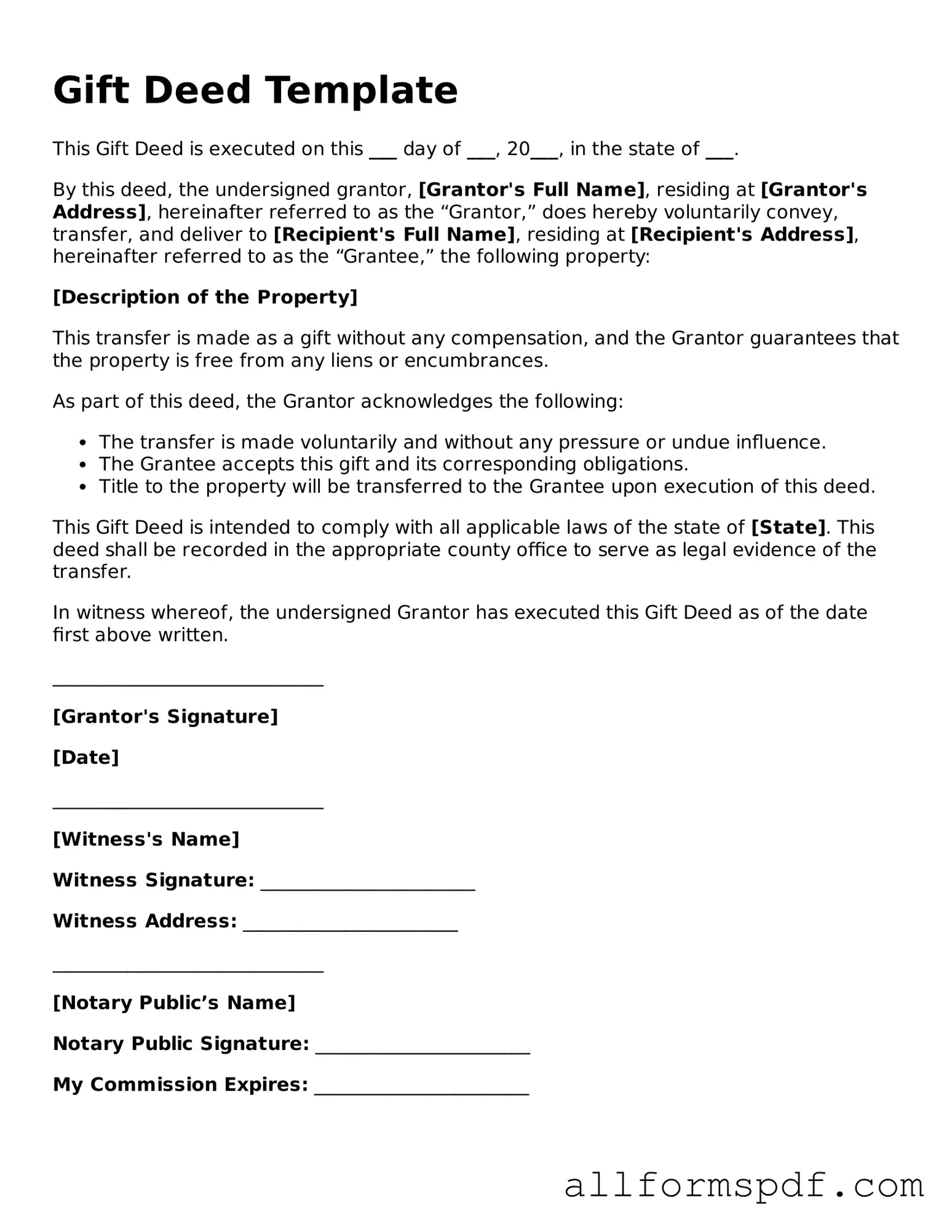Filling out a Gift Deed form can be a straightforward process, but there are common mistakes that individuals often make. These errors can lead to confusion or even legal complications down the line. Understanding these pitfalls can help ensure that your intentions are clearly documented and legally sound.
One frequent mistake is not providing complete information about the donor and the recipient. It's essential to include full names, addresses, and any relevant identification numbers. Incomplete information can create ambiguity and may lead to disputes regarding the ownership of the gifted property.
Another common error is failing to describe the property being gifted in sufficient detail. Whether it’s real estate, personal property, or financial assets, a clear and thorough description is necessary. Without this clarity, it may become difficult to identify what exactly was intended to be transferred, which can lead to misunderstandings.
People often overlook the importance of signatures. Both the donor and the recipient should sign the Gift Deed to validate the transaction. If either party neglects to sign, the deed may not hold up in court, rendering the gift ineffective. Additionally, having a witness sign can add an extra layer of credibility.
Another mistake involves neglecting to check state-specific requirements. Different states may have unique regulations regarding gift transactions. Failing to comply with these requirements can invalidate the deed or create complications in the future.
Lastly, individuals may forget to consider tax implications. While many gifts are not subject to taxation, there are limits to how much one can gift without incurring tax liabilities. Consulting with a tax professional can help ensure that all financial aspects are appropriately addressed, preventing any unexpected surprises later on.
